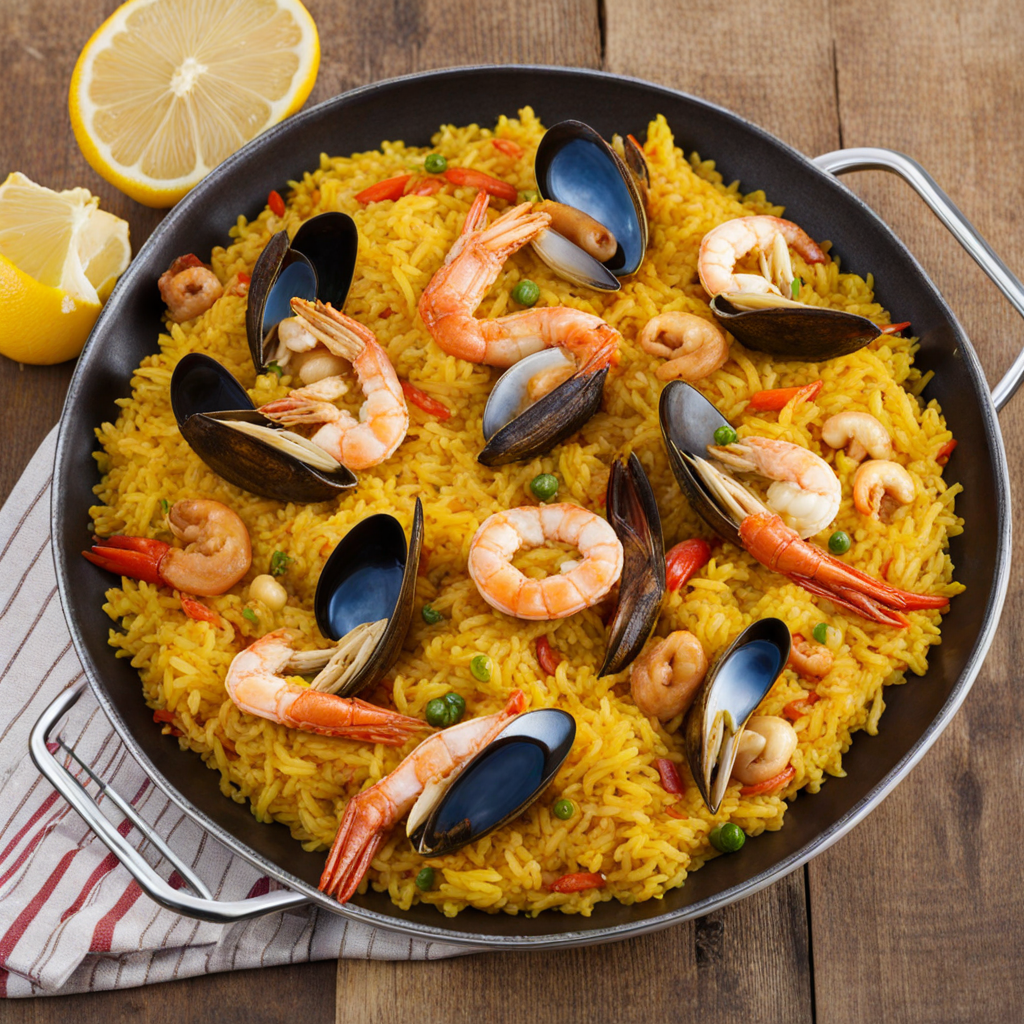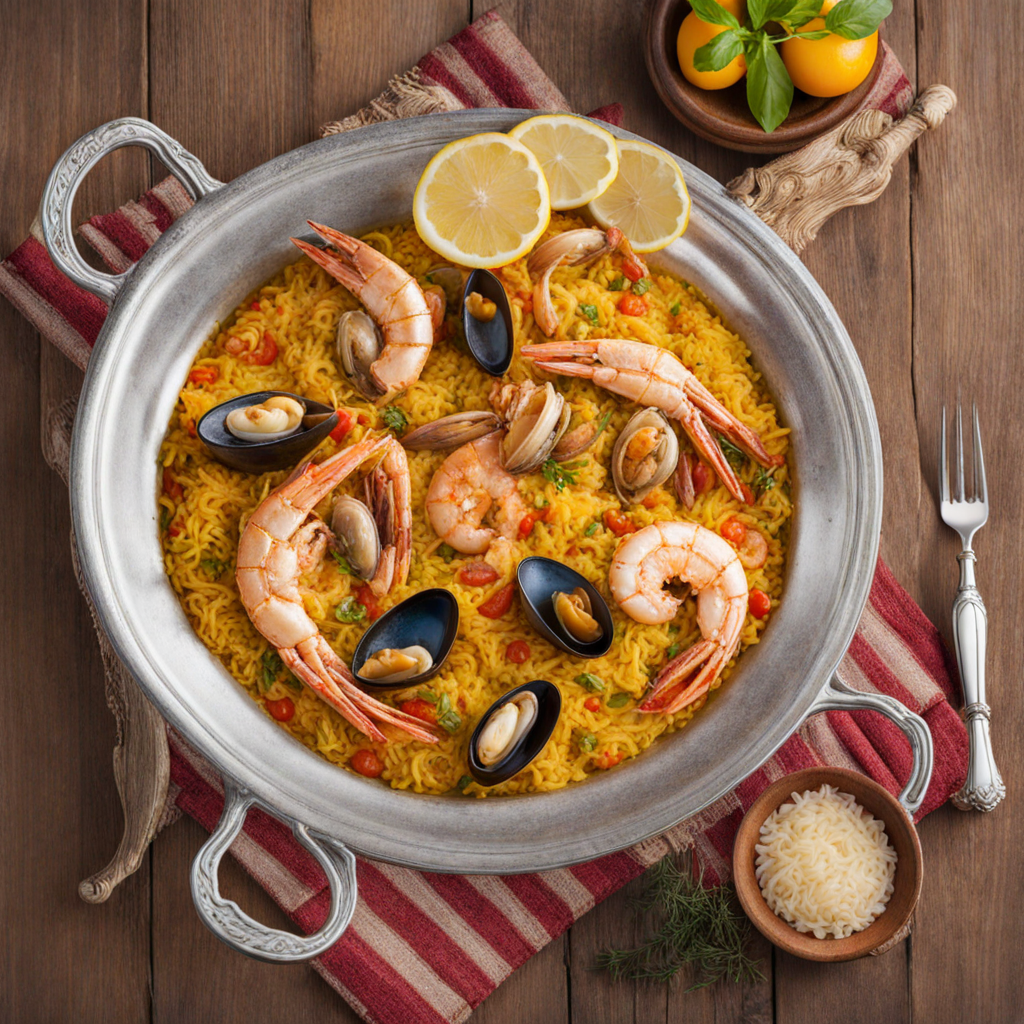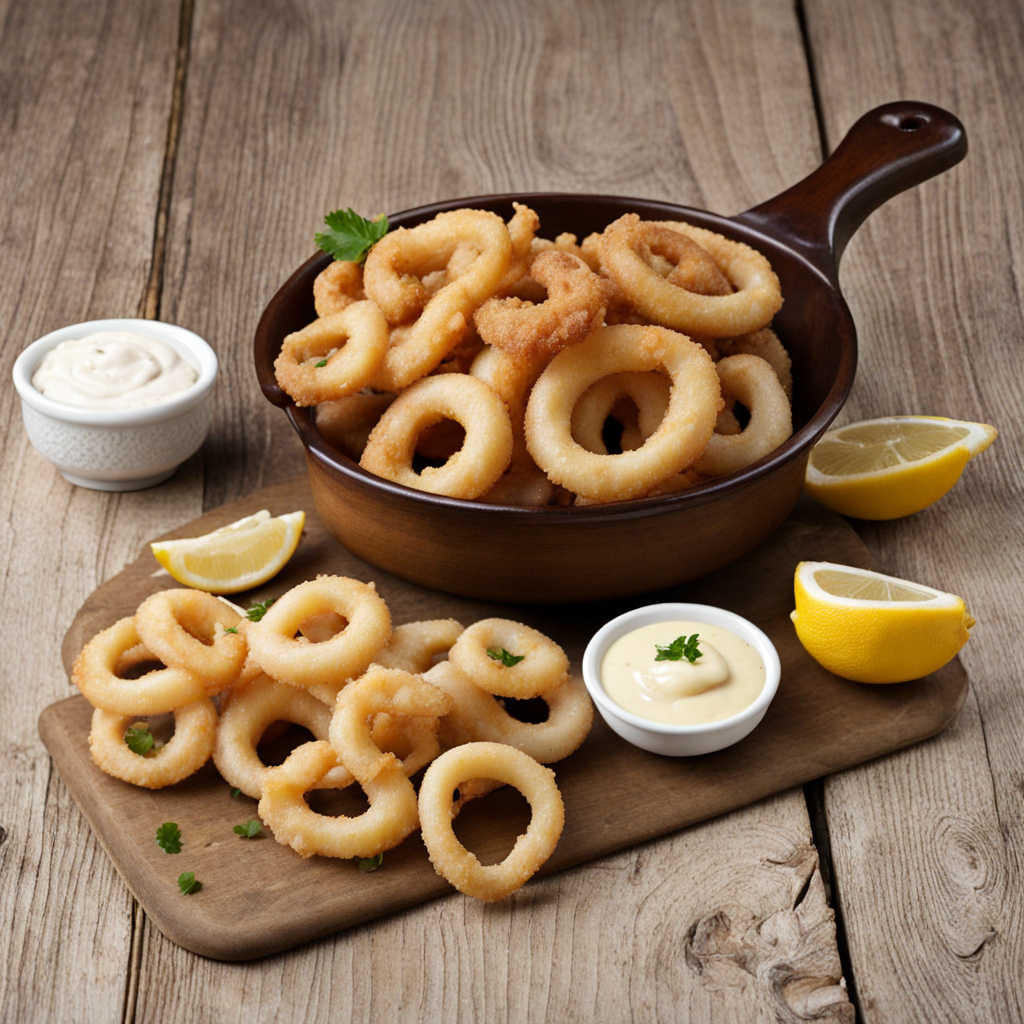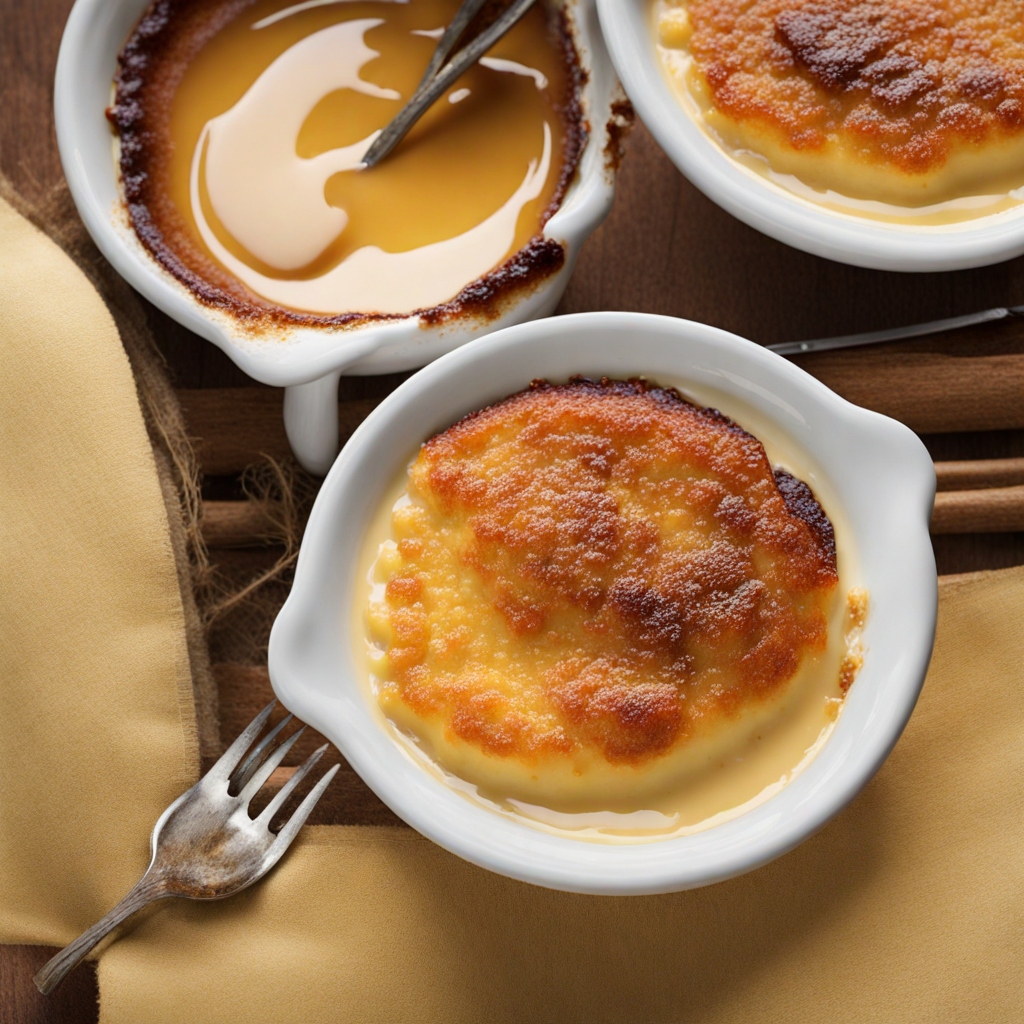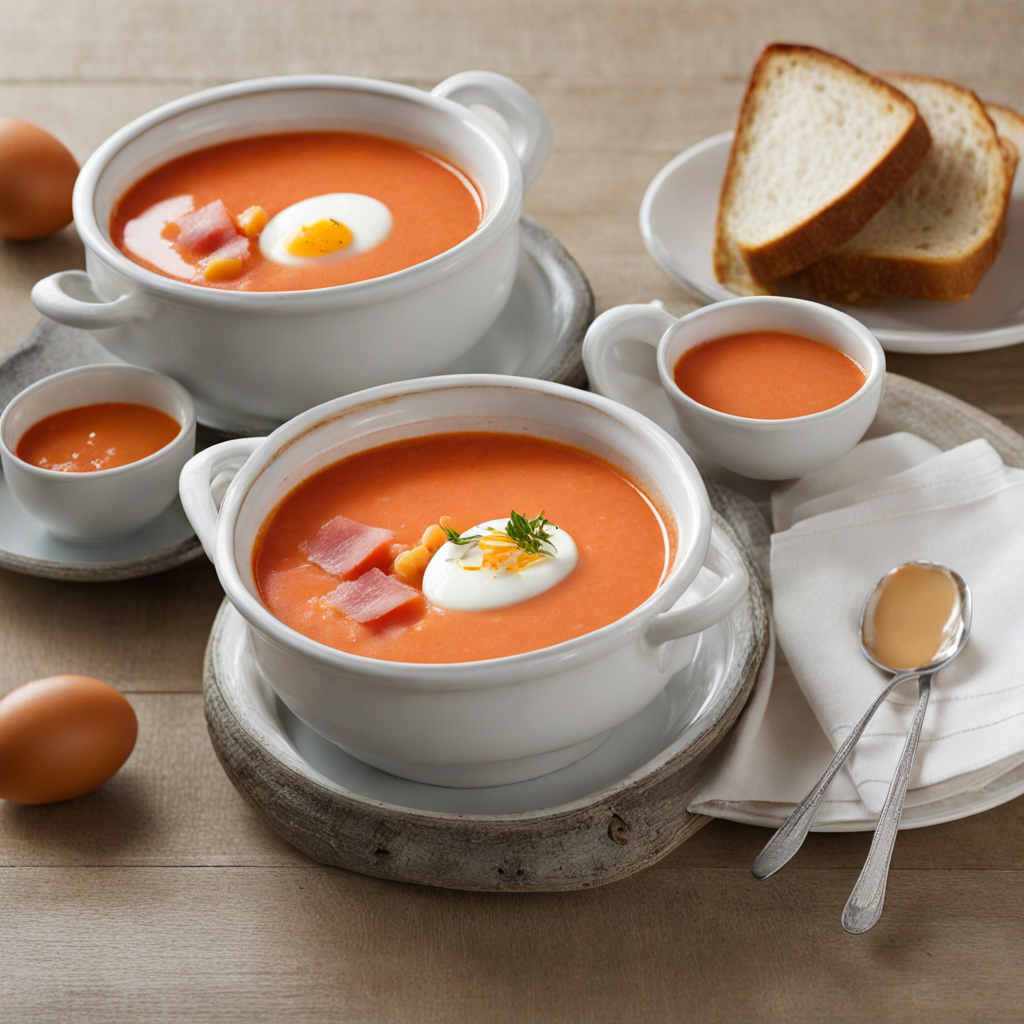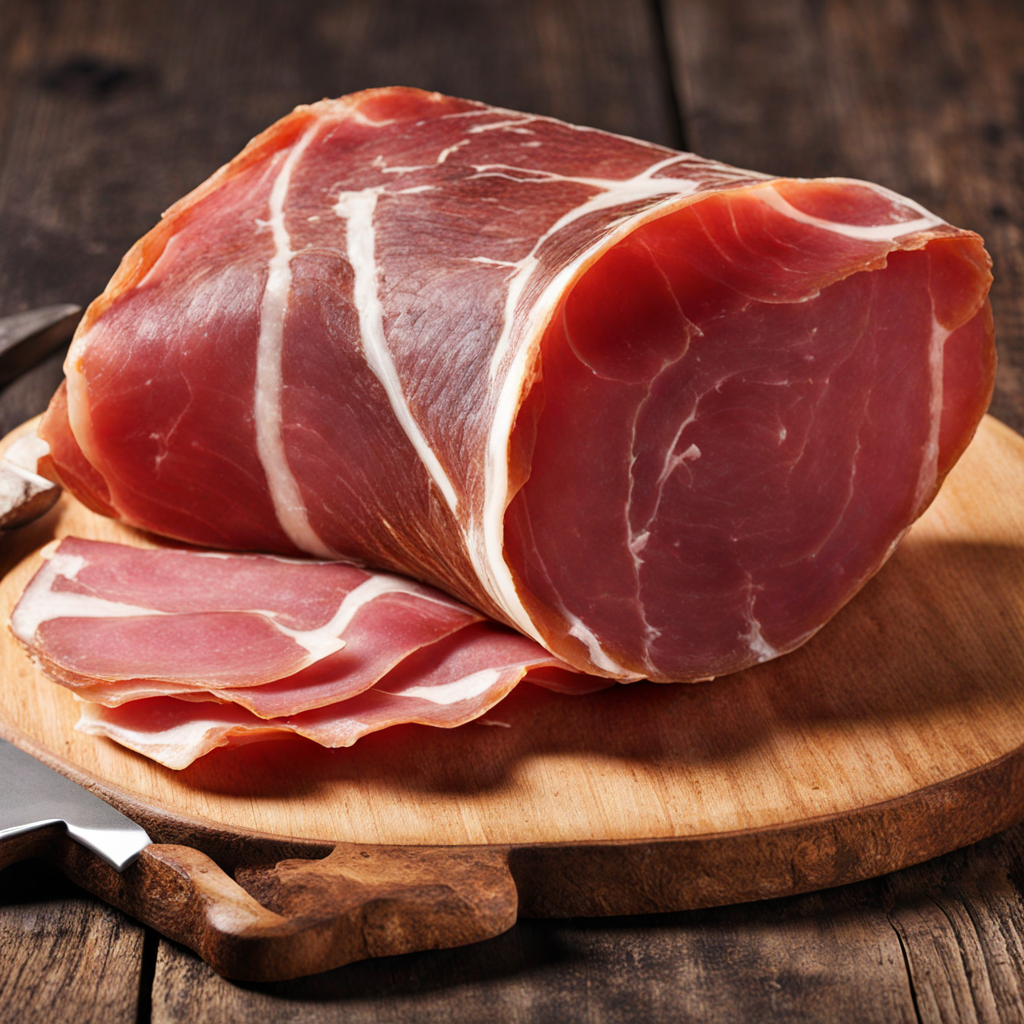Paella
Paella is a vibrant and aromatic dish that originates from the region of Valencia in Spain. Traditionally cooked in a wide, shallow pan, this culinary masterpiece showcases a beautiful medley of ingredients that often include rice, saffron, and a variety of proteins such as chicken, rabbit, seafood, or vegetables. The rice is slowly simmered in a flavorful broth, allowing it to absorb all the rich, savory flavors from the spices and ingredients, resulting in a comforting and satisfying bite. The vivid yellow hue of the saffron-infused rice is not only visually appealing but also adds a unique depth of flavor that is distinctly Spanish. The preparation of paella is as much about the cooking method as it is about the ingredients. Traditionally, it is cooked over an open flame, which imparts a slight smokiness to the dish, enhancing its complexity. As the rice cooks, it develops a crispy crust on the bottom known as "socarrat," a prized feature that gives each serving a delightful texture contrast. The dish is often garnished with fresh herbs, lemon wedges, and sometimes even peas or bell peppers, creating a colorful presentation that invites diners to dig in. Paella is more than just a meal; it is an experience that brings people together, often enjoyed in a communal setting. Whether you’re savoring a classic Valenciana version with land-based proteins or a seafood variation brimming with fresh catch from the Mediterranean, each bite of paella tells a story of Spanish culture and tradition. The blend of flavors, textures, and the warm, inviting atmosphere of sharing this dish make it a must-try for anyone looking to explore the rich tapestry of Spanish cuisine.
How It Became This Dish
The Rich Tapestry of Paella: A Culinary Icon of Spain Paella is not just a dish; it is a culinary emblem that encapsulates the essence of Spanish culture, history, and regional diversity. Originating from the eastern coast of Spain, particularly the region of Valencia, paella has evolved over centuries, absorbing influences and adapting to local ingredients and traditions. This dish is a striking representation of how food can reflect the landscape, the people, and the passage of time. #### Origins of Paella: A Marriage of Cultures The roots of paella can be traced back to the mid-19th century in the rural areas surrounding Valencia. While similar rice dishes existed in the Mediterranean region, the creation of paella as we know it today is attributed to the agricultural practices of the Valencian countryside. Here, the fertile land was conducive to rice cultivation, a vital crop introduced by the Moors during their rule in Spain, which lasted from the 8th to the 15th centuries. The word "paella" itself is derived from the Latin word "patella," which means "pan." Traditionally, paella is cooked in a wide, shallow pan, a design that allows for even cooking and the formation of the coveted socarrat—the crispy layer of rice that forms at the bottom. The dish was originally a humble meal prepared by farmers and laborers, who would cook rice over an open fire and add whatever ingredients they could find—typically, a mix of vegetables, snails, and occasionally rabbit or chicken. With the passage of time, various influences began to shape the dish. The introduction of saffron, a spice that became synonymous with paella, came from the Arab world and was prized for its flavor and vibrant color. This golden spice transformed the simple rice dish into a feast for both the eyes and the palate. By the late 19th century, paella began to emerge as a popular dish beyond the confines of rural kitchens, becoming a celebrated staple at family gatherings and local festivals. #### Cultural Significance: A Dish of Community and Celebration Paella is deeply embedded in the cultural fabric of Spain, particularly in Valencia, where it is often associated with communal gatherings and celebrations. It is not merely about sustenance; it is a dish that brings people together. Traditionally, paella is cooked outdoors, often over an open flame, which enhances the communal experience. Friends and family gather around the simmering pan, sharing stories and laughter as they await the meal. In Valencia, the celebration of Las Fallas, a festival held in March, often features paella as the centerpiece of the festivities. During this time, locals prepare massive pans of paella, showcasing variations such as “paella Valenciana,” which includes rabbit, chicken, green beans, and garrofó (a type of bean native to the region). The festival exemplifies the regional pride that accompanies the dish and highlights its importance in Spanish cultural identity. Furthermore, paella has transcended its humble beginnings to become a symbol of Spanish cuisine worldwide. As globalization spread, so too did the popularity of paella, leading to its adaptation in numerous countries, each putting its unique spin on the classic recipe. In this way, paella has become a culinary ambassador, representing Spain and its rich gastronomic heritage. #### Evolution and Regional Variations As paella gained popularity, it began to evolve, leading to various regional interpretations that reflect local customs, ingredients, and preferences. While the classic Valencian paella remains the most recognized, other variations have emerged across Spain and beyond: 1. Seafood Paella: Originating from coastal areas, this version replaces meat with an array of seafood, including fish, shrimp, mussels, and calamari. The use of fresh seafood showcases the coastal bounty of the Mediterranean and appeals to those who prefer a lighter dish. 2. Mixed Paella: This variant combines both meat and seafood, offering a fusion of flavors that caters to diverse palates. Mixed paellas often include chicken, rabbit, and seafood, creating an exciting interplay of textures and tastes. 3. Vegetarian Paella: As dietary preferences evolve, vegetarian paella has gained popularity, replacing meat with an assortment of seasonal vegetables like bell peppers, artichokes, and peas. This adaptation highlights the versatility of paella and its ability to accommodate changing culinary trends. 4. Fideuà: A cousin to paella, fideuà is made with short noodles instead of rice. Originating from the seaside town of Gandía, this dish is often flavored with fish and seafood, providing a delightful twist on the traditional preparation. 5. International Variations: Paella has traveled far beyond its Spanish origins, inspiring variations worldwide. From the Caribbean to the Philippines, local chefs have embraced the concept, creating dishes that reflect their own culinary cultures while paying homage to the original. #### Modern Paella: Tradition Meets Innovation In recent years, the preparation of paella has witnessed further transformation as chefs experiment with techniques and ingredients. High-end restaurants have reimagined the dish, incorporating gourmet elements such as truffles, artisanal saffron, and even molecular gastronomy techniques. These innovations challenge the traditional notions of paella while still respecting its roots. Culinary tourism has also played a role in the resurgence of traditional methods. Visitors to Spain often seek authentic paella experiences, leading to a renewed interest in the dish's history and preparation. Cooking classes and food tours centered around paella have become popular, allowing participants to immerse themselves in the culture while learning to create this beloved dish. Moreover, the rise of social media has allowed chefs and home cooks alike to share their paella creations with a global audience. Instagram and other platforms have popularized visually stunning presentations, further elevating the dish's status and leading to a renewed appreciation for its artistry. #### Conclusion: A Dish Beyond Borders Paella is more than just a meal; it is a narrative woven into the cultural tapestry of Spain. From its humble beginnings as a farmer's dish to its status as a culinary icon, paella exemplifies the adaptability and resilience of food traditions. It serves as a reminder of the region's agricultural roots, the mingling of cultures, and the joy of shared meals. Today, as people around the world savor paella, they are partaking in a rich history that spans centuries. Whether enjoyed at a bustling festival, a family gathering, or a fine dining experience, paella continues to evoke a sense of community, celebration, and connection—an enduring symbol of Spanish heritage that invites everyone to partake in its flavorful journey.
You may like
Discover local flavors from Spain


